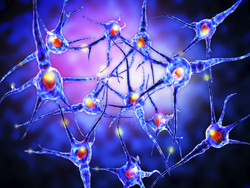Targeting neuronal degeneration
In pathological conditions of the nervous system, neuron maintenance and survival are impaired. Accumulating evidence points to the neuroprotective role of the enzymes SIRT1 and PARP1, which are involved in DNA damage repair, cell death and senescence. The substrate of these enzymes, NAD, is synthesised by the NMNAT enzyme that also protects neurons through an unknown mechanism. The key objective of the EU-funded 'Isoform-specific functions of NAD-synthesising enzyme NMNAT in compartmentalised neuronal death' (NEURONAD) project was to delineate the role of NMNAT in neuronal maintenance. Since mice with a deletion in the NMNAT gene die at the embryonic stage, scientists developed a novel model where NMNAT was deleted only in neurons. Although in vitro studies indicated expedited cell body degeneration in cervical ganglia, NMNAT knockout mice did not display any morphological changes in brain or retina neurons. Mechanistic insight into the protective function of NMNAT indicated that NMNAT2 promotes axon survival by scavenging its substrate nicotinamide mononucleotide (NMN). Pharmacological inhibition of NMN synthesis delayed axon degeneration, profoundly implicating NMN in neuronal apoptosis. As an NMN scavenging system, scientists introduced the bacterial enzyme deamidase, which modifies NMN, into neurons. Interestingly, they observed that neurons expressing the enzyme survived longer than control neurons. When tested in vivo, deamidase was able to delay degeneration of sciatic nerve after cut (Wallerian degeneration) more than 10-fold and to retain neurological function. The finding that deamidase provides a resistance to injury-induced neurodegeneration could also extend to other types of degenerative disorders. Testing the hypothesis that an increase in NMN is the underlying aetiology in neuronal apoptosis provides an interesting angle for future research.







